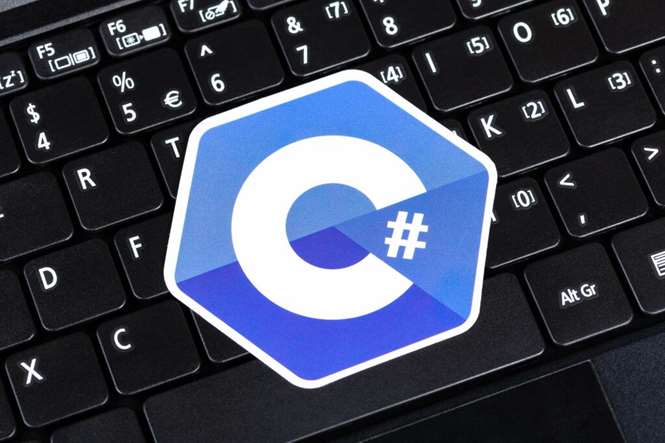Teams can use numerous CI/CD tools, including Bitbucket Pipelines, an integrated CI/CD service built into Bitbucket. It allows you to automatically build, test, and even deploy your code based on a configuration file in your repository. Open DevOps also integrates with other CI/CD tools including Harness, GitLab, JFrog, Codefresh, and CircleCI.

It does this through the use of automated code testing tools and quality assurance tasks. Once CI is in place CD processes can be built on top of it to deploy code to end users, and develop a feedback loop which will steer future releases. It’s an answer to the problem of poor visibility and communication between dev and business teams.
Good Things Come to Those Who Wait: CSA Postpones Continuous Disclosure Reform to Dovetail With Modernized Delivery
Start by implementing basic unit tests that get executed automatically — there’s no need to focus yet on running complex end-to-end tests. Instead, you should try automating your deployments as soon as possible and get to a stage where deployments to your staging environments are done automatically. The reason is, if you have automatic deployments, you can focus your energy on improving your tests rather than periodically stopping things to coordinate a release. Introducing CI to the aforementioned scenario allows software developers to work independently on features in parallel. When they are ready to merge these features into the end product, they can do so independently and rapidly.

Taken together, all of these connected CI/CD practices make deployment of an application less risky, whereby it’s easier to release changes to apps in small pieces, rather than all at once. There’s also a lot of upfront investment, though, since automated https://www.globalcloudteam.com/ tests will need to be written to accommodate a variety of testing and release stages in the CI/CD pipeline. The benefits of agile include being able to support teams in changing circumstances while focusing on delivering business value.
Continous Delivery
These practices help your team be more productive by freeing developers from manual tasks and encouraging behaviors that help reduce the number of errors and bugs deployed to customers. In the CSA’s view, the “access equals delivery” model is well suited for these types of documents given that they are increasingly being accessed online by investors. The reason is the CSA’s intended parallel implementation of the continuous disclosure reforms with the modernized electronic delivery model, an initiative first announced in 2020. Our goal is to make deployments—whether of a large-scale
distributed system, a complex production environment, an embedded system, or
an app—predictable, routine affairs that can be performed
on demand. The challenges of continuous integration are primarily around team adoption and initial technical installation.
- Teams look for the opportunity to improve the efficiency of each step, consequently reducing end-to-end flow time.
- A software development system that automates the project phases from source code to distribution.
- Using CI enables these software development tasks to be developed independently and in parallel amongst the assigned developers.
- Continuous delivery (CD) is an approach to software engineering based on producing software in short cycles.
- Continuous integration puts a great emphasis on testing automation to check that the application is not broken whenever new commits are integrated into the main branch.
- Getting started with CI/CD requires devops teams to collaborate on technologies, practices, and priorities.
- Teams can use numerous CI/CD tools, including Bitbucket Pipelines, an integrated CI/CD service built into Bitbucket.
If the target code base for a CI install does not have a VCS, step one is installing a VCS. Once a project has established a CI pipeline with automatic test coverage, it is a best practice to constantly develop and improve the test coverage. Each new feature coming down the CI pipeline should have an accompanying set of tests to assert that the new code is behaving as expected. Faster feedback on business decisions is another powerful side effect of CI. Product teams can test ideas and iterate product designs faster with an optimized CI platform. Continuous delivery allows teams to quickly discover and correct issues, empowering them to develop a sharper understanding of key usability requirements.
What is a continuous delivery pipeline?
A CI/CD pipeline introduces monitoring and automation to improve the application development workflow, particularly at the integration and testing phases, as well as during delivery and deployment. To practice CI/CD you can use tools that automate development, deployment, and testing. Specific tools offer integration, others provide development and deployment, while others offer testing. Atlassian offers an Open DevOps solution that provides end-to-end DevOps processes including CI/CD.
CTO.ai enables engineering teams, software developers, and solutions architects to build and deploy software faster. With CTO.ai, developers and teams can authenticate code changes in real time by connecting to your Version Control System like GitHub ci cd monitoring or GitLab. For your applications, you can configure a simple YAML file that defines all the CI/CD processes for your application. CI/CD is a method to frequently deliver apps to customers by introducing automation into the stages of app development.
DAD Life Cycle – Continuous Delivery: Agile
Teams look for the opportunity to improve the efficiency of each step, consequently reducing end-to-end flow time. This improvement includes addressing active time and quality (percent complete and accurate) at each step. As opposed to components, subsystems can be stood up and validated against customer use cases.
The rationale is that it’s easier to identify defects and other software quality issues on smaller code differentials than on larger ones developed over an extensive period. In addition, when developers work on shorter commit cycles, it is less likely that multiple developers will edit the same code and require a merge when committing. Each of these practices improves process automation and increases the robustness of cloud computing environments. Together, these practices provide a strong foundation to support continuous deployment. The agile movement gave rise to new technological breakthroughs that streamlined and automated the application delivery lifecycle. The first important process was Continuous Integration (CI), with development teams checking their code more frequently in separate branches before merging them into a common trunk.
The importance of continuous integration
The operations teams can then deploy the code to the live production environment at the push of a button. After the process of automating builds and configuring changes in your continuous integration, continuous delivery prepares and automates your code and resource changes for release to your specified environment. Continuous Delivery helps to boost productivity in your organization and enhance code quality. Continuous delivery aims to have a codebase ready for deployment in a production environment. Continuous integration is a coding philosophy and set of practices that drive development teams to frequently implement small code changes and check them in to a version control repository. Most modern applications require developing code using a variety of platforms and tools, so teams need a consistent mechanism to integrate and validate changes.
Properly implemented CI enables developers to deploy any code change to testing and production environments late in the software development lifecycle (SDLC). Developers can thus rely on build artifacts that have passed standardized test processes and are ready for deployment. It illustrates how developers write code on their laptops and commit changes to a source code repository, like Bitbucket. By code, we mean the system under test, the tests, and the infrastructure used to deploy and maintain the system.
